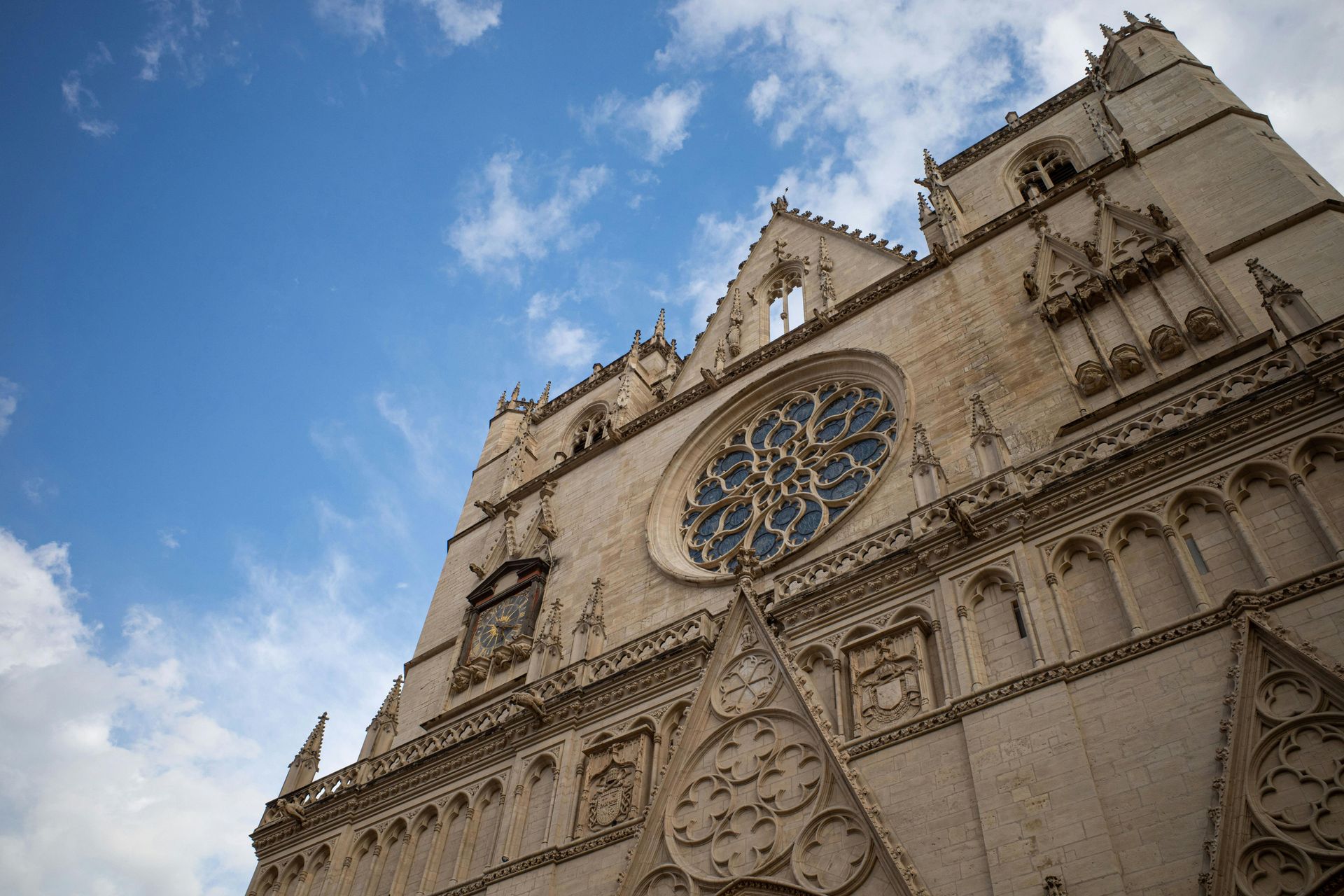Anatomy of a Lawsuit
Bernadette Howell, Spiritual Health Practitioner - November 26, 2024
Breaking silence. Confronting clergy abuse.
Last month when I joined Outrage Canada (https://www.outragecanada.ca/) I was alerted to a keynote presentation that had been shared with members at their most recent AGM, a month earlier in September 2024.
Titled ‘When David Knows Goliath’s Weaknesses’, this presentation was given by Sandy Kovacs, a Vancouver based lawyer and someone I had the opportunity to observe as she led the trial of John Doe v the Archbishop of Vancouver earlier this year in a British Columbia Supreme Court. In her presentation she offers helpful analysis on the anatomy of a lawsuit, and I thought this week, I would offer comment on this.
You can also listen to this presentation yourself by going to the Outrage Canada website, clicking on ‘Resources’ and scrolling down to ‘Podcasts, Books, Talks & Audiobooks’.
And, if you haven’t already joined Outrage Canada (and there is no fee to join), I encourage you to do so and to help support the move for change by becoming a member. By the very act of becoming a member, you help increase the numbers of those wishing to raise awareness across Canada, and you join others by showing your support.
Sandy Kovacs opens by saying that she loosely adapted her presentation title from a Malcolm Gladwell book published in 2015 called David and Goliath: Underdogs, Misfits, and the Art of Battling Giants.
The descriptor for Gladwell’s book notes that ever since the shepherd boy David felled a mighty warrior and monster called Goliath with nothing more than a pebble and a sling, the names of David and Goliath have stood for battles between underdogs and giants.
Victim-survivors, as Sandy points out, often feel like the underdog as they attempt to hold the Catholic Church accountable for their actions. One individual up against such a powerful behemoth of an institution, complete with its own team of lawyers.
This said, Sandy Kovacs believes that with support and good advocates, the Davids of this world can be effective with their slingshots.
There should of course be no need for a battle against anyone, and certainly not between any ‘underdogs and giants’, but the sad reality is such that the legal process is sometimes, indeed most of the time, the only way to hold the Catholic Church accountable for their actions.
Born and raised Catholic, Sandy openly shares that she was also sexually abused as a child, not by a clergyman but through familial abuse. With her lived experience, and having myself observed her in court, she has great compassion for, and is fully aware of, what it is like for survivors.
Sandy explains that people choose to go through the legal process for many different and personal reasons but at the heart of every case, victim-survivors clearly want to seek justice.
Victim-survivors want to expose the truth and in doing so, hopefully find the peace they so deserve.
Sandy explains that in civil litigation and in the pursuit of justice, the only thing a judge can do is award monetary damages. Thus, the phrase ‘it’s all about the money’ certainly has relevance, but not for the reasons many people assume.
Before diving into some of the slides Sandy shares, I want to jump head to an important slide titled “Why the numbers matter”—and for this blog on the topic of lawsuits, I want to give you some context.
Personally, I am weary of hearing from those who automatically conclude that victim-survivors are ‘just in it for the money’, this mostly coming from Catholics who do not take the time to understand what victim-survivors have endured,
I am reminded by what was shared with me last February.
Upon the news of a new civil claim just lodged and made public here in Vancouver, a ‘high ranking cleric” (by deduction it was either the Bishop or the Vicar General of the Vancouver Archdiocese who was being referenced) shared with a group of both clergy and non-clergy that they should:
“Be prepared to stand by for a string of accusations coming down the line, deliberately strung out one after another by a lawyer, and not all will be true.”
It seems the remarks shared were intended to plant the seed that such legal accusations might and should be construed as “money grabs”.
That such misinformation and propaganda is being shared by either a bishop or a vicar general of this archdiocese, or indeed any archdiocese, is disturbing.
Why?
Firstly, because it is so untrue, but secondly because those listening, as I mentioned in a previous blog, are for the most part, though certainly not all, people who do not necessarily apply critical thinking and will believe, through years of inured obedience to the Catholic Church, everything the priest or hierarchy tells them.
If they were thinking people, would even just one of them have stood up and publicly, in front of the others, challenged that ‘high ranking cleric”, that bishop or vicar general, and confronted him?
I doubt it.
But back to, why numbers matter.
Numbers are important. Money, in any trial or settlement, has great relevance and is important because it needs to reflect the gravity of the harms and losses incurred.
As Sandy notes, “when suing for personal damages, one has to prove the losses that flow from the injuries. It is about replacing a person’s losses.”
To make it clear, she adds “It’s not about a lottery win, but suing for their (the victim-survivor’s) money.”
Its about claiming for the victim-survivors’ lost income based on careers that never were pursued or were interrupted on account of trauma or PTSD; inability to function; dealing with hugely impacted self-esteem issues, these just to name a few of the outcomes a person who has been sexually abused may experience.
As described recently by one of John Smyth’s victim survivors in the UK, the abuse is something he never wanted to define him, yet its like he’s constantly looking in his rearview mirror and always being distracted by the past instead of focusing on what is right in front of him, and where he needs to be going today.
Or as Axel Montaner, who attended St. Mary’s in Edmonton, a Salesian Junior High School and now a defunct Catholic boarding school, is quoted as saying, “the abuse impacted the “wiring” of his young brain and influenced every decision he made later in life.”
Monetary damages, says Sandy, are rarely the sole motivating factor for any client she has taken on.
Clients, pursuing justice, want to effect change.
Take, for example, the recent case of D.H. v Archdiocese of Vancouver and Westminster Abbey/Christ the King Seminary. Certain settlement terms were at the crux of the matter and without these being agreed to, D.H. was determined to go to court. The longer he held out for those terms, the higher the number went until the Catholic Church finally agreed to his terms, namely, to publish all the documents relating to his trial.
This said, it will be six months (on November 28). We have not yet seen sight of one single document pertaining to the D.H. case from all the documents that were to be made public. This likely relates to legal discussions, back and forth and other possible web based technical issues, but for the waiting public, six months is a long time to read those documents already disclosed, shared and known to the lawyers, the plaintiff and the defendants.
But the important fact remains. Non-monetary remedies of public accountability play a critical role, hand in hand with large monetary penalties.
As Sandy notes, public accountability is what is best achieved in the courtroom but if one settles before a trial, that accountability piece is typically lost.
This said, “the process, if done right, can help restore their (the victim-survivor’s) power and possibly offer them peace, as much as that may be possible, and although peace is not guaranteed, this is the goal” says Sandy.
She adds that this precisely is why she does this work, and that in helping people to have their voice heard and find justice, she is helping to re-empower people whose power and self-worth had been so wrongly stolen from them in the first place through the abuse.
Sandy breaks her presentation into different sections which I highlight below. But to help readers better understand the fuller process, I take the liberty to first offer some additional basic detail, loosely covering the initial steps taken.
Upon first meeting a new client, and listening compassionately to their story, a lawyer then needs to assemble all the background detail pertinent to their case and gather as many documents as possible to determine the veracity of the claim. Lawyers will then file the complaint. This is called the Notice of Civil Claim which details the injury caused and which names both the defendants and all parties who are being served notice.
The process is such that the defendants are allowed a certain period of time to respond. The deadline to file Responses depends on whether the defendant is intra, or extra jurisdictional, but usually, extensions of time are granted to accommodate the search for insurance coverage and the appointment of counsel.
Typically, pleadings (the formal written statements establishing the framework for the litigation) are closed within three to six months. It can then take as long as three to five years before this case will actually come close to a possible settlement or trial date.
Once pleadings are closed, documents on both sides are requested and swapped. This is known as Document Disclosure.
This can include a wide variety of pertinent documents and collated information, such as notes from therapy sessions, journal entries should you have journaled about your experiences, correspondence, records of formal complaints should you have made any etc.
The defendants are also required to produce relevant documents. However, as Sandy notes, “we know that we are not getting everything”.
Some documents received do point to direct or gross negligence, but what is received, she adds, is just “the tip of the iceberg”.
What Sandy and her team focus on, in addition to the array of documents received, is:
“Where are the gaps? What is missing?”
Invariably there is missing information, which one cannot help but conclude, are documents knowingly withheld.
As it pertains to gaps and what’s missing, Sandy goes on to talk about a document found recently by one of her key researchers and used in a recent class action lawsuit against the Catholic Church in Quebec.
It is a four-page legal opinion document, signed by a Catholic priest and canon lawyer, now deceased. This (late) Oblate of Mary Immaculate (OMI) priest goes by the name of Fr. Francis G. Morrisey.
La Croix reports that in 1991, this “globally renowned expert” recommended, among other things:
““destroying certain documents” out of fear they might one day be seized by civil authorities or that they could “be harmful later on.” He advised keeping “fewer documents rather than more” in the archives and of not making his recommendations “too public.”
https://international.la-croix.com/world/canada-canon-lawyer-advised-destruction-of-religious-archives
I found the following statement below, given by this OMI canon law expert, to be particularly disturbing.
Fr. Francis Morrissey’s words sum up the extent to which the Catholic Church will protect its priests over established law, over egregious harms done to children and others, and over what is right and just. As I’ve said before, Jesus would be ‘turning in his grave' if he had not, perchance, been resurrected.
This OMI priest and canon law expert advised:
“Since we are not required to keep everything, it would be a good idea, before a civil case arises, to go through the archives and destroy any documents that could be harmful later on.”
Wow….
Knowingly destroying evidence.
We learn through Sandy’s presentation that another avenue that Catholic Church bishops use to keep things secret and to avoid public exposure is to deposit certain documents with the Papal Nunciature in Ottawa.
Why?
Because the Papal Nunciature can claim diplomatic immunity through Foreign Affairs.
The Vatican (albeit only for less than a hundred years), is considered a ‘foreign state’.
It was the Lateran Treaty of 1929, signed by Benito Mussolini and Pope Pius XI, which granted the Vatican and its officials such immunities and privileges.
Britannica records that:
“Upon ratification of the Lateran Treaty the papacy recognized the state of Italy, with Rome as its capital. Italy in return recognized papal sovereignty over the Vatican City, a minute territory of 44 hectares (109 acres), and secured full independence for the pope."
Thank you, Mussolini!
Consequently, getting access to pertinent documents is incredibly challenging.
“They block, they hide, they try to avoid relevant documents from seeing the light of the courtroom.”
Continuing on with the anatomy of the lawsuit, document disclosure is then followed several months later, by a term I’d always heard of before but never fully understood: the process of being ‘in discovery’, or Examination for Discovery.
At this juncture the defendants can choose who they put forward to represent the defending corporation in speaking to information that has surfaced and in place of the ‘responsible’ individual themselves. The Catholic Church, according to Sandy, has tried to put forward a non-clergy representative, which is, for the most part, “useless.”
The request to put forward representatives can be refuted and as Sandy notes herself: “I want the bishop, or the vicar general or someone (specifically clergy) from that period of time.”
We learn that even if a person is ‘too unwell’, elderly, fragile, or even on their death bed, they can still be accommodated, virtually, to appear for discovery.
Indeed, Sandy speaks of her discovery back in 2020 of the now late Archbishop Adam Exner in her first trial against Christ the King Seminary in which she spoke to the archbishop from his care home facility in Shaughnessy. To readers not from Vancouver or familiar with this area, the religious order to which this archbishop belonged, as also did Fr. Francis Morrisey, the OMI canon lawyer who advocated for the destroying of evidence, own property and a care facility located in a very wealthy suburb of Vancouver.
Sandy had to apply for a court order to compel Exner to discovery, over the Church’s objection that he was “too unwell” to give evidence.
This was not the first time she had questioned Exner. In an early cross examination during the Anderson v. Molon trial in 2019, Sandy reports the following line of transcribed questioning:
“Archbishop Exner, I need to ask you, do you believe that your moral authority under God is greater than the authority of this courtroom?”
(To which the archbishop replied):
“I would say so.”
This is a critically important to mention here.
Catholic Church leaders, and in this case, these words spoken directly by the late Archbishop Adam Exner, believe themselves to be above the law.
Herein lies just one of many difficulties: dealing with a defendant who thinks they are above the law.
As one self-declared atheist blog reader shared with me a few months back, religious people such as Catholic clergy “follow and believe in what a supernatural being is telling them.”
Whatever yours, or my beliefs may be, we would all do well to consider this viewpoint carefully.
Because a man has a Roman collar around his neck, or wears a bishop’s mitre, and professes connection with God, does he have the authority to override the law?
My answer is, of course not.
But a man who believes he has the authority to override the law on the basis of his relationship with “a supernatural being” is certainly cause for deep concern.
Moving on with the presentation, something which Sandy will always initially recommend to clients is that they first attempt Mediation.
However, to this specific point, she shares that experience has shown her that one must also be prepared to walk away from the mediation process.
As she says, “If they (the defendant) think the client is ‘settlement minded’, they’re not going to come to the table with a fair number.” She goes on to note, “the only time you get a fair number is if the defendant is backed into a corner and knows you’re determined to go to court.”
Going to court typically forces certain documents to then become a record in the public domain, something the Catholic Church has a reputation of wanting to avoid.
I am reminded of the documentary Prey which I watched so recently and how Rod McLeod, around whom the documentary is focused, spent four years dealing with what I understood to be litigation and attempted mediation, before choosing to go to trial.
Four years is a long time.
I cannot imagine how wearing it must be on one’s mental and emotional health to go through such protracted proceedings, wanting to be heard and validated in your attempts to find justice for what should never have happened to you in the first place and pushed back at every attempt, seeking only to be fairly treated and renumerated for losses.
If settlement is not possible, the parties can proceed to trial.
Depending on the evidence that needs to be presented, duration then must be decided upon—as in how many days or weeks are needed for such a trial. Once committed to a trial, the intense preparation begins for this public, and from the perspective of the victim-survivor, very difficult time in their lives. First the original trauma, now this.
As part of the overall legal process, various other processes are taking place in the background. Plaintiffs, for example, are sent for various assessments (psychological, vocational, medical etc.) by both sides; the defendant’s lawyers are allowed access to witness contact information to whom they can reach out to for purposes of questioning and to aid their defense in advance of the trial, though such witnesses are not obliged to comply; witnesses deemed relevant can be subpoenaed (summoned to give evidence) etc. etc.
Trials, as I learned when I attended the Doe v. Kilty trial in February, run to a very tight detailed schedule and agenda.
By way of further additional information, Sandy shared some other additional pertinent details about the civil litigation process.
As to why numbers matter (with the prime reason being to replace the loss incurred over the lifetime), there are other reasons she offers, namely: validation, equality in the law and exposure.
One can never underestimate the importance of validation, acknowledging and rightfully compensating the victim for the harms and losses they have experienced. Low numbers serve only to aggravate the harm and minimize what the survivor feels and, as Sandy notes, people need and deserve “to be truly validated and recognized for their suffering.”
A court in British Columbia nearly 30 years ago noted:
“We are only just beginning to understand the horrendous impact of sexual abuse. To assess damages for the psychological impact of sexual abuse on a particular person is like trying to estimate the depth of the ocean by looking at the surface of the water. The possible consequences of such abuse are not capable of such critical measurement.” (S.Y. v F.G.C. (1996) BCJNO.1596 (CA) at para. 55).
It's up to lawyers, such as Rob Talach on the east coast, or Sandy Kovacs on the west coast, as well as others whose names I am not currently familiar with, and who take on this work, to prove the injury, just as one would do in any case involving damage and loss.
Sandy speaks about equality in the law and what she means by this is that damages need to reflect the harms caused just as the law, which has evolved over time, proves and pays damages for injuries such as traumatic brain injury or chronic pain arising from road accidents. High damages are settled in such arenas, and we need to see much higher numbers being awarded for sexual abuse survivors.
PTSD is as disabling, if not more disabling, than chronic pain, and with modern medical evidence in support of proving the injury and disability, the courts are finally starting to recognize the severity of the harm and losses that flow from PTSD secondary to sexual abuse.
Moreover, the bigger the numbers, the bigger the risk and exposure for the defendants and thus the bigger the deterrent.
Sandy, and I am sure it is the same for other lawyers doing this work, sees it as her job to continually push to increase the numbers the Church faces.
The Catholic Church has already paid out billions of dollars yet there have not been any ‘radical’ changes that have taken place.
This said and as Sandy notes, there have been ‘some’ changes, and she quotes Tom Doyle as saying, “litigation has really helped move the needle on this issue in the last thirty years.”
But it means lawyers and victim-survivors must keep “plugging away and slinging their slingshots”.
Sandy draws her presentation to a close speaking to a worry she has, namely the topic of "bankruptcy and shifting assets".
Bankruptcy is already happening in the U.S. and has also been seen, for example, in St. Johns, Newfoundland and Labrador, following the Mount Cashel judgement. It’s a word she is hearing spoken more frequently in local dioceses.
The bigger issue, however, is that of shifting assets.
On January 8, 2020, journalist Josh Saul wrote an article for Bloomberg titled: “Catholic Church Shields $2 Billion in Assets to Limit Abuse Payouts”
It seems the Catholic Church is restructuring its assets in order to shield itself from civil liability.
While everyone wants to protect their assets, the trouble is we no longer trust the Catholic Church to be doing the right thing and for the right reasons.
Allow me to repeat what Fr. Francis Morrissey of the Oblates of Mary Immaculate said in his role as a canon law expert:
“it would be a good idea, before a civil case arises, to go through the archives and destroy any documents that could be harmful later on.”
This could read:
“It would be a good idea, before too many more civil cases arise, to go through our assets and move these to offshore accounts to protect ourselves so that we don’t have to pay the thousands of victims who our clergy have, under our watches, so grossly harmed.”
And don’t forget, many of the men shifting Catholic Church assets publicly declare they are above the law.
Will they tell us that they are working on God’s specific orders as God (he, she, they and neither) instructs them to quickly and swiftly hide the money?
BishopAccountability (https://www.bishop-accountability.org/) is an organization which holds the largest public library of information on record related to the ongoing Catholic clergy abuse crisis.
Amongst many things it does, it tracks documents and caches them to their own server.
It notes, “the Internet is a valuable resource, but what it giveth it taketh away. Studies have shown what we all have experienced: links become broken quickly, and important documents vanish every day from the Internet.”
It goes on to state that as an organization, it was created so that “the entropy (this author adds: 'the randomness of different particles in the system') of the Internet cannot reinforce the secrecy of the bishops.”
I’m glad to report that BishopAccountability has a link to the Bloomberg article for anyone interested in reading this.
https://www.bishop-accountability.org/2020/01/catholic-church-archuleta/
In Sandy’s concluding remarks, she quotes Ruth Bader Ginsburg, the former Associate Justice of the Supreme Court of the United States, who wisely said, “Real change, enduring change, happens one step at a time.”
The trouble is, one step at a time, takes such a long time especially when Goliath brings in all its reinforcements. Slinging pebbles has had to morph into slinging rocks, and needs to strategically continue.
Litigation is only one tool. And although it is an extreme tool, “its an important external pressure point.”
Litigation serves the individuals concerned but, as Sandy says, this alone is ineffective without public awareness.
She goes on to mention the importance of groups such as Outrage Canada which has a critical role to play in increasing public awareness and the prevention of clergy abuse in the future, especially given that public media is so under-resourced at this time.
She ends by saying that a critical component of change involves enlisting “the support of the progressives on the inside of the Roman Catholic Church”.
These progressives, she tells us, do exist and we need to build those bridges.
Hmm. Forgive my doubting mind, but I wonder about this last statement...
Such people, in my experience, are few and far between.
I am certainly aware of some good people working within the Catholic Church, but I am saddened because we never hear their voices speak out loud in any public forum.
I can understand why. They likely fear their standing within the Church, but, is this right and acceptable?
As to the progressive laity within the Church whom Sandy refers to, my own belief is that those who are progressive have either already left or, if they remain, have a tough uphill struggle and effectively hold little power to bring about what is needed. Like others before them, they will likely and ultimately get worn down, leaving the battlefield (such as I did) or, and will potentially conclude it takes too much energy to rock the boat, let alone get the boat to change course.
There are some scenes in Cillian Murphy’s latest movie “Small Things Such as These” that artfully demonstrate the challenge of ‘rocking the boat’ with the Church.
This movie, released on November 8, I personally found to be moody and very slow moving yet it is one of those movies, which as the days go by, keeps niggling at you all the time and leaves you contemplating several unanswered but important questions.
Based on a fictional novel written by Irish author Claire Keegan, it portrays the angst and interior machinations of Bill Furlong, a coal merchant in a small town in Ireland who stumbles upon the slavery of a Magdalene laundry. This Magdalene laundry is operated by the nuns who also run the local school on the same premises. It is the only school in the area which will provide education for his five daughters.
Should he rock the boat? What might this risk involve?
I should add, that in my opinion, Emma Watson, who plays Sister Mary, the Mother Superior, gives a far more powerful performance as a nun than Isabella Rossellini in “Conclave’!
Sister Mary, not unlike many still living within religious orders, monasteries and diocesan ‘enclaves’, becomes so institutionalized and inured into a system that she (they) are trying to uphold. Consequently, Sister Mary, as others today, are unable to see what they're doing.
But back to Bill Furlong and rocking the boat….
People around him, all Catholics of course as this was Ireland in the mid 1980s, are cautioning him to ‘not rock the boat’.
Essentially, the nuns are providing him and his family with something he needs just as in this archdiocese and for many across Canada and elsewhere, the Church is providing something, whatever it may be, that people want and need.
Thus, few people are willing to ‘rock the boat.’
I would like to be telling you that because more and more people did speak up and rocked the boat back then in Ireland that the legacy of the ‘Magdalene’ laundries eventually did come to an end in the mid 1990s, but it really was the discovery in 1993 of a mass grave on the grounds of former convent in Dublin which led to much media coverage. 155 bodies of ‘Magdalene’ women, young girls, who died while enslaved by the nuns had their bodies exhumed…
Ultimately, the UN Committee on the Rights of the Child called for a government inquiry into the Magdalene laundries and the last Magdalene laundry, based on Sean McDermott Street in Dublin was finally closed on 25 September in 1996.
This was what the Catholic Church was doing 28 years ago.
In 28 years time, for those of us still alive, I wonder what unacceptable horrors we will be looking back on that are currently happening in the Catholic Church today?
All the more reason we need to take action today and be a part of changing the course of history for the greater good....
Till next week,
Bernadette



QUICK Links
Education Links
All Rights Reserved | Outrage Canada | Privacy Policy
Website by EVOLV Digital Marketing

